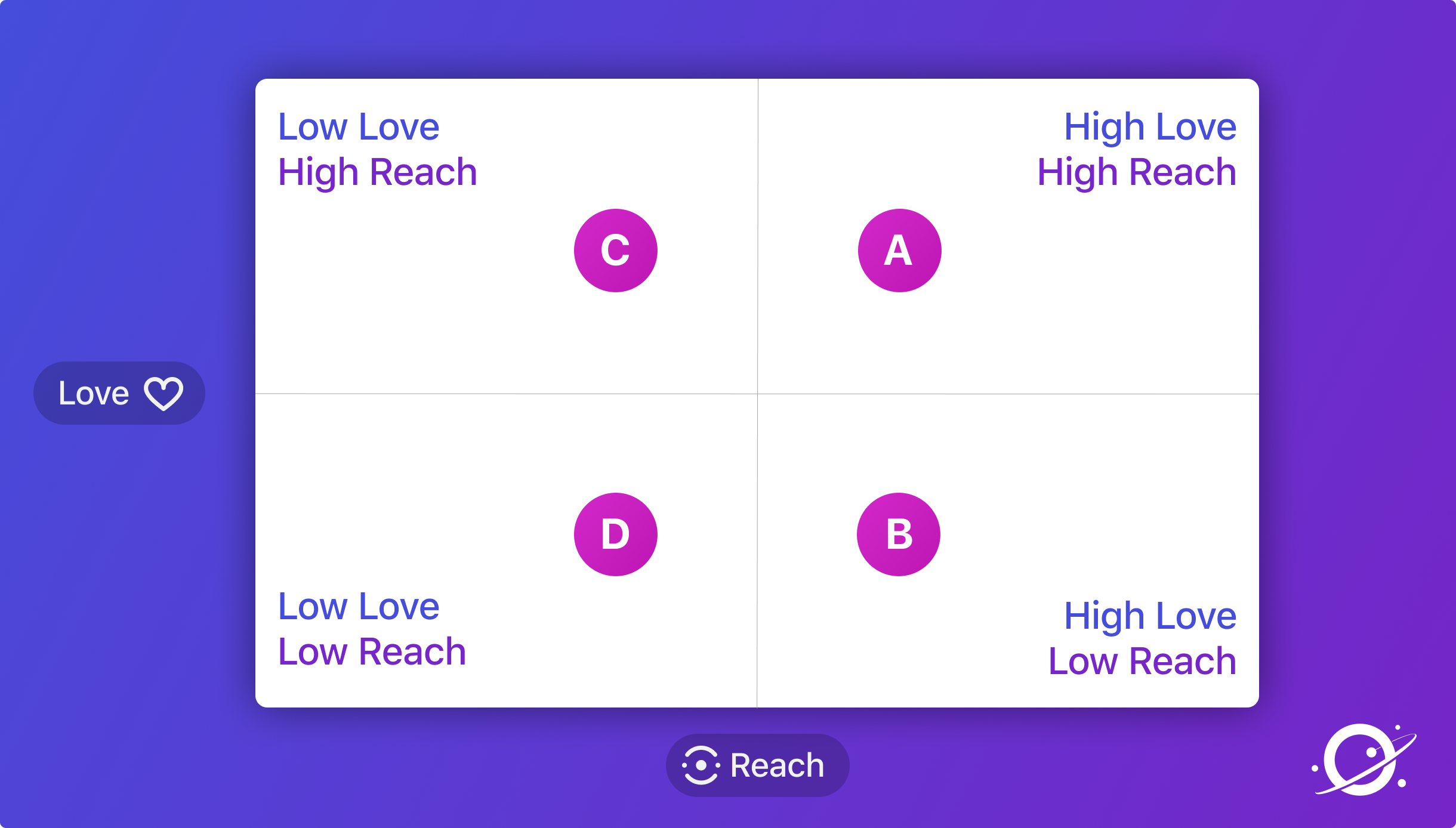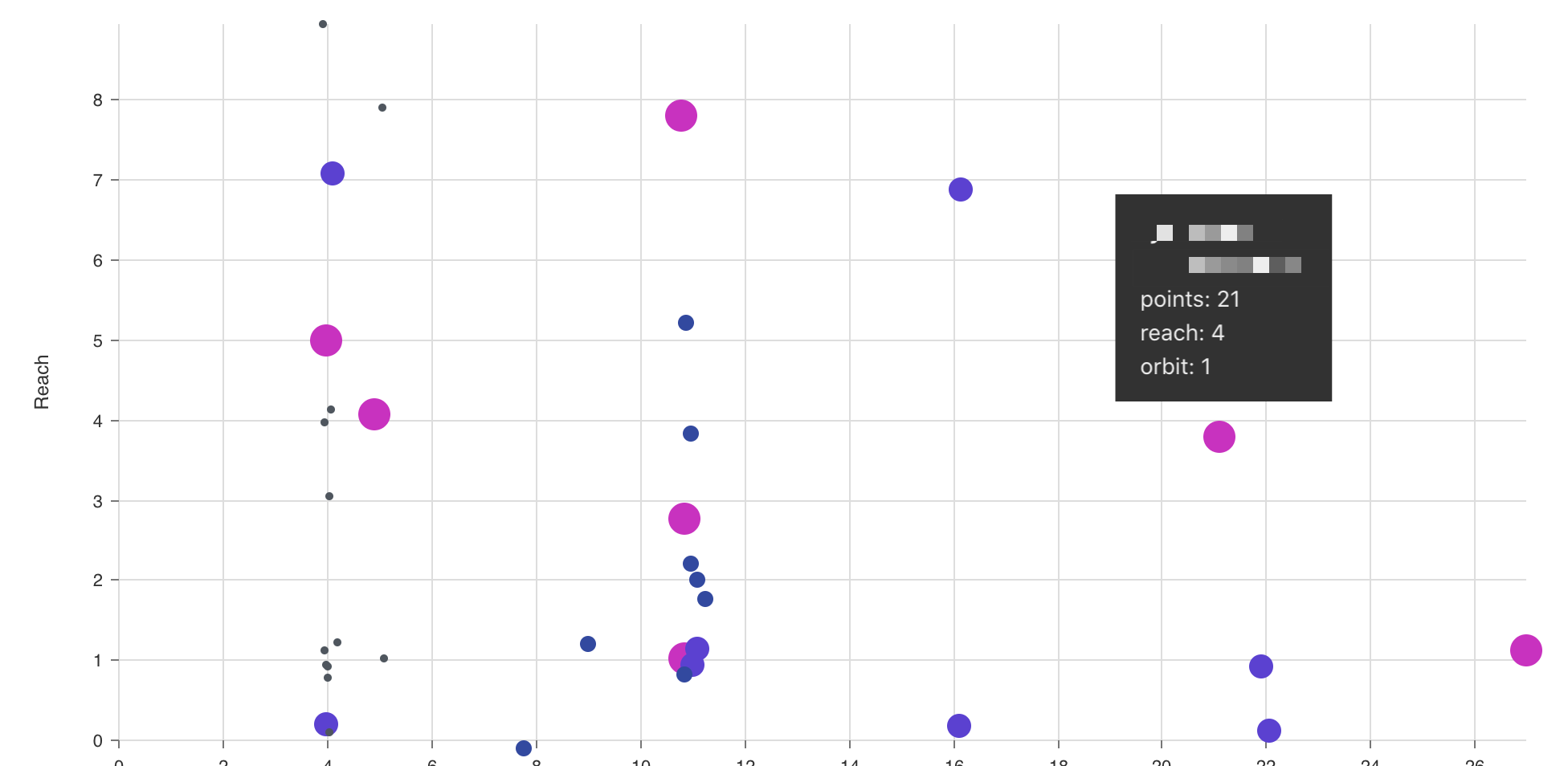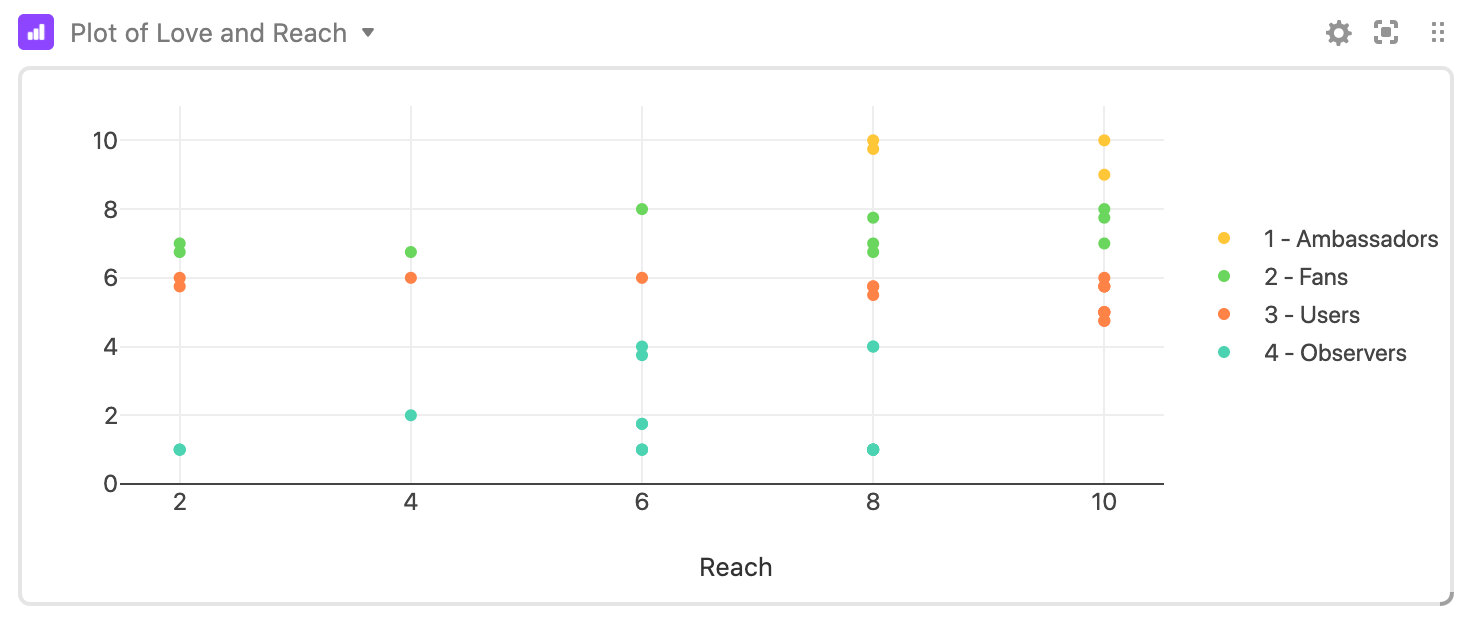Use this segmentation grid to plan your community outreach
How to use Love and Reach to better understand your community.

Patrick Woods
May 7, 2020
Think of the last person you DMed on Twitter or in your community Slack. Maybe it was someone you wanted to build a deeper relationship with or ask for help with something.
These kinds of 1:1 interactions are essential to growing a community. But how did you decide who to reach out to?
There’s a good chance you made the decision based entirely on your intuition. Without a framework, you probably went with your gut.
Intuition is powerful, but it’s biased toward recency and visibility.
In other words, you’re likely to think of newer community members or people you already know from Twitter.
As a result, there's a chance you spend time with only a handful of people from your community, while folks who would contribute more—if only they were asked—fall through the cracks.
When your community is small, it's easy to make decisions intuitively, but without data and a framework, it's hard for intuition to keep up as your community grows from dozens to thousands As you grow, a little data goes a long way.
Using data to guide your intuition
This is where the Orbit Model comes in. It can surface data that helps you decide who to work with and how to prioritize as your community grows.
One way to make more intentional and informed decisions about your outreach strategy is to group community members by Love and Reach, and then create playbooks for each group.
Once you’ve segmented your community into quadrants, you can plan intentional outreach and allocate your time based on each member’s relationship to you.
Instead of only going with your gut and, for example, DMing whomever happens to be online, you can set goals and plan your outreach accordingly.

As a reminder:
Love is a member's level of engagement and activity in the community.
Reach is a measure of a community member’s sphere of influence.
If you’re using a community CRM like Orbit, you can view this info on the Members page:

And if you’re using the Orbit Model templates, check out the block called “Plot of Love and Reach,” which should look something like this:

Of course, you’ll want to customize your plans and allocate your time to each group based on your strategy, but hopefully these examples will get you started.
A. High Love, High Reach
Goal: Partner in meaningful ways
These folks are active community members and have a large reputation in the broader community, and there’s a good chance you’re already actively working with some of them.
Here are some ideas for going deeper with these valuable community contributors:
- Offer early access to new features and products
- Offer to sponsor their newsletter or podcast
- Donate to their Open Collective or Sponsor them on GitHub
- Help them find jobs or consulting gigs
- Make sure they have top-tier or limited edition swag
B. High Love, Low Reach
Goal: Grow their visibility
These folks have explicitly demonstrated interest in your community, but don’t personally have the reach to amplify their love to the broader world. In these cases, you should try to provide opportunities for them to expand their reach:
- Retweet their content from official accounts
- Ask them to write guest blog posts
- Ask them to join as a guest on your podcast
- Offer speaking slots at your webinars or your events
C. Low Love, High Reach
Goal: Increase their love
Given these members’ reach, even small increases in love will have a large effect. That said, because of their influence, you’re likely not the only person reaching out to them. As a result, they probably don’t have a lot of time, so the offer should be really valuable or really easy for them to complete.
- Send a quick DM to compliment one of their blog posts, videos, or tweets
- Contribute code to their project
- Participate in their community
- Try direct outreach to offer training or personal onboarding
- Reach out and offer swag
D. Low Love, Low Reach
Goal: Keep them warm
Since you have limited time, you should probably avoid 1:1 outreach to these folks until they reach out for support or otherwise engage.
In the meantime, you can lean on content to encourage this group to do more with your product and community, thereby increasing their love. Guides, tutorials, and playbooks are particularly useful here.
Deliver the appropriate member experience
As a community leader, you will always have more community members than team members, so you have to make decisions about whom you can engage with and what kind of experience is appropriate for each person.
Instead of just guessing and hoping for the best, a framework like this will help your team prioritize their work and make data-informed decisions about the right kinds of experience for every member of your community.
You might also like:
- Why Orbit is Better Than Funnel for Developer Relations
- DevRel teams need tools and models created specifically for our discipline, and not just those adopted from other fields.
- Slack vs Discord vs Discourse: The best tool for your community
- An in-depth comparison of 3 top community platforms across dozens of factors.
- How we use Orbit to build Orbit
- A guide to how we use our product to build our community.

